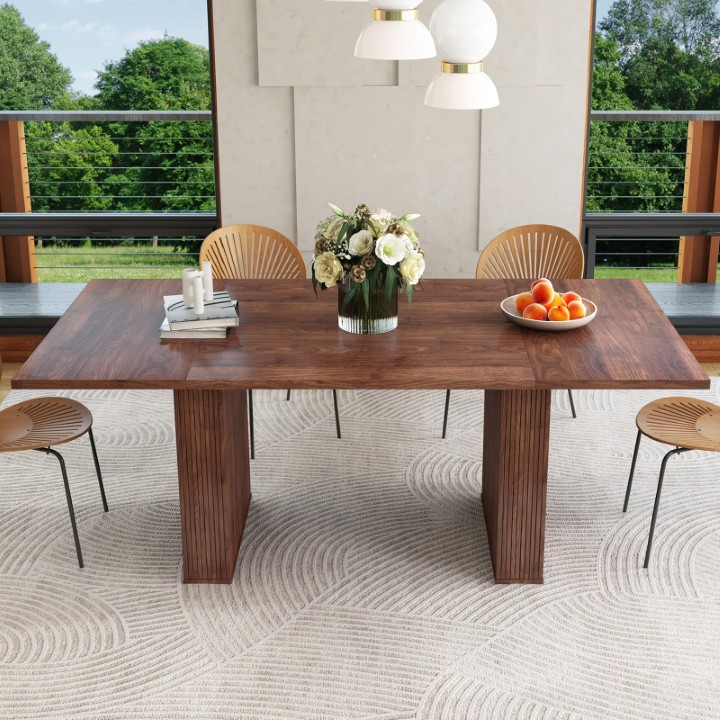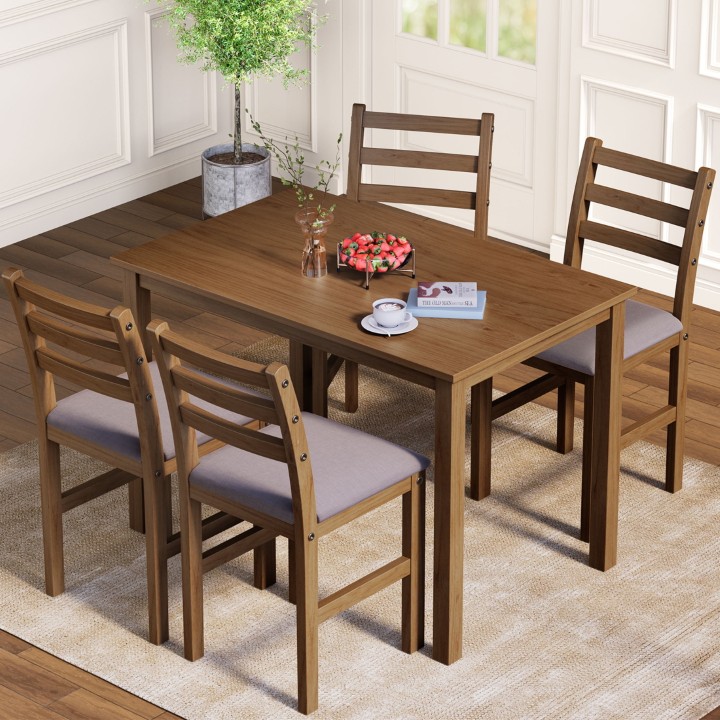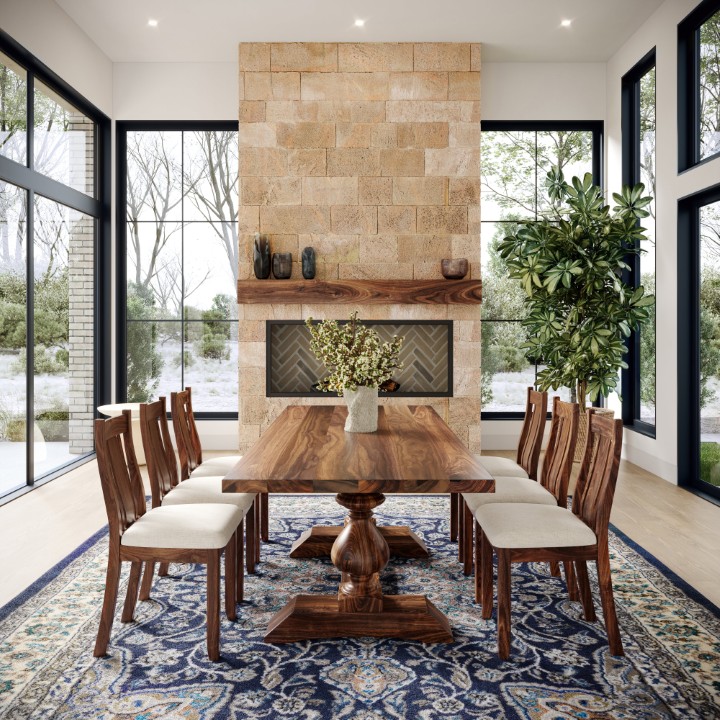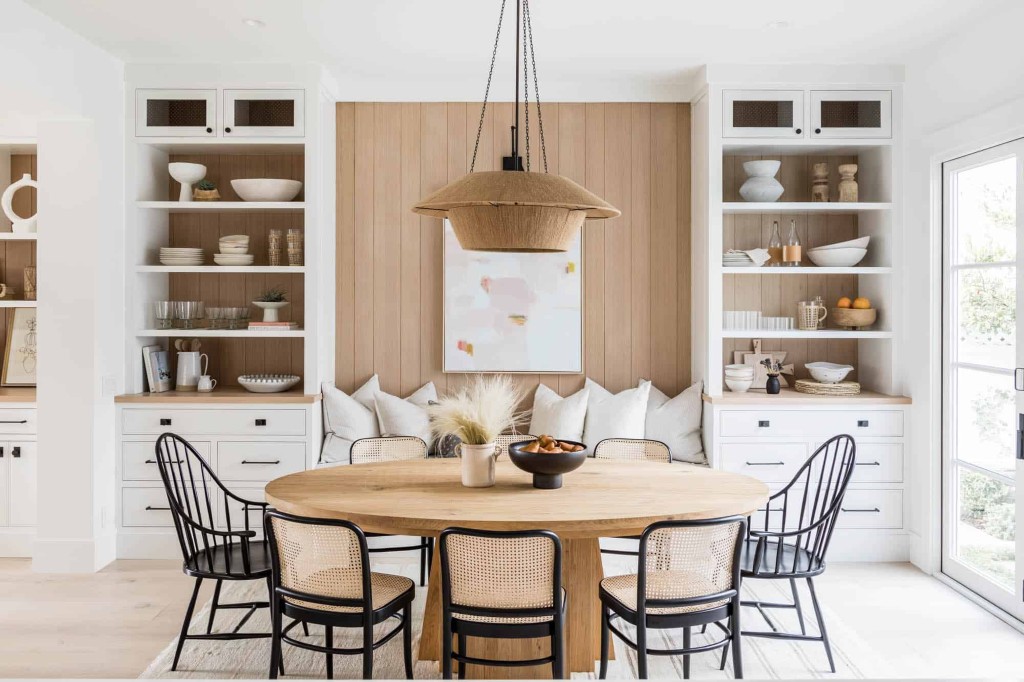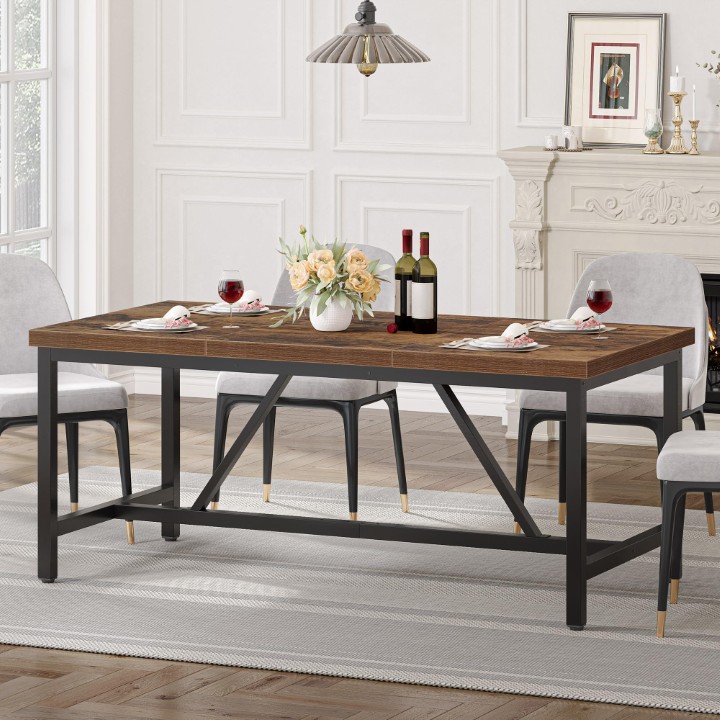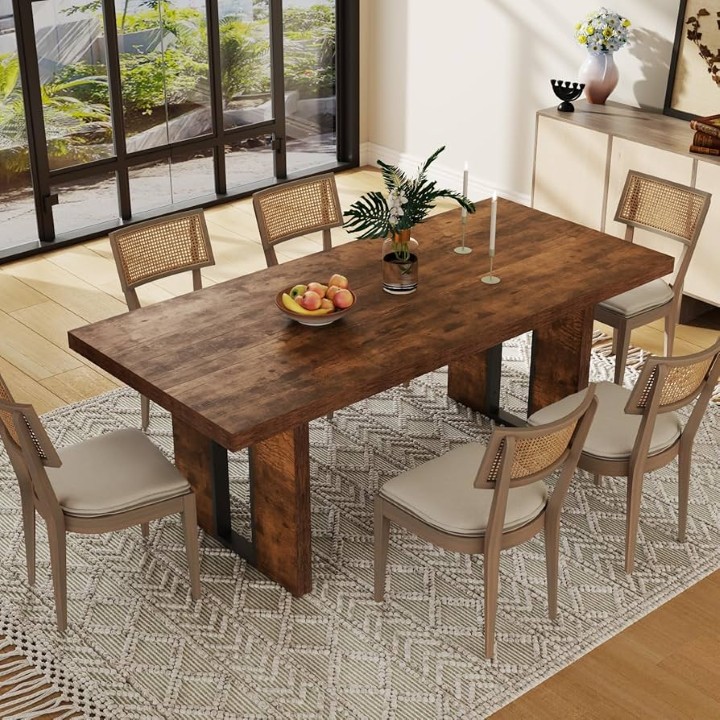Think about it for a second. Where do most of the important moments in your home unfold? Often, it’s around the dining table. From boisterous family dinners and intimate gatherings with friends to homework sessions and even the occasional quiet cup of coffee, this piece of furniture is a true workhorse. But choosing the right size isn’t just about aesthetics; it’s about functionality and comfort. A table that’s too big can make a room feel cramped, while one that’s too small can leave your guests feeling a bit… squeezed. So, how do you find that sweet spot? Let’s dive in and demystify the common dining room table sizes and how to pick the one that’s just right for you.
So, you’re in the market for a new dining table. Exciting. But as soon as you start looking, you realize there’s a whole universe of dimensions out there. Rectangular, round, oval, square – and then there are the lengths and widths. It can feel a little overwhelming, can’t it? Don’t fret. Understanding common dining table sizes is the first step to making a confident choice. We’ll walk through the typical dimensions for different shapes and, more importantly, guide you on how to measure your space and consider your needs to ensure your new table is a perfect fit, both physically and functionally. It’s all about creating a space where everyone feels welcome and comfortable.
Rectangular Tables: The Versatile Classic
Rectangular tables are the most prevalent shape, and for good reason. They tend to fit well in most dining rooms, especially those that are longer and narrower. They’re also fantastic for seating a good number of people comfortably.
Common Sizes and Seating Capacity:
- 4-6 People: Typically around 60 inches long and 36-40 inches wide. This is a great size for smaller families or couples who entertain occasionally. It offers enough surface area without dominating a smaller room.
- 6-8 People: Usually in the 72-inch length range, with widths still around 36-40 inches. If you find yourself hosting slightly larger get-togethers, this is a solid option. You can often squeeze in an extra chair if needed, especially if the table ends are accessible.
- 8-10 People: Aim for tables around 84 inches long and 40-44 inches wide. This size is ideal for larger families or those who love to host dinner parties. The extra width can make a big difference in terms of elbow room and serving dishes.
- 10-12 People: You’re looking at tables 96 inches or longer, and widths can expand to 44-48 inches. These are serious dining tables for serious entertainers or very large households. Make sure your room can comfortably accommodate this much furniture and still allow for movement.
Pro Tip: When considering length, remember to factor in enough space for chairs to be pulled out. About 36 inches of clearance behind each chair is a good rule of thumb for comfortable passage.
Round Tables: The Intimate Entertainer
Round tables foster a sense of intimacy and encourage conversation because everyone can see each other. They’re also excellent for smaller spaces as they don’t have sharp corners, making them feel less imposing and easier to navigate around.
Common Sizes and Seating Capacity:
- 2-4 People: Around 36-44 inches in diameter. Perfect for cozy nooks or smaller dining areas. You can often fit four people comfortably, and it feels less formal than a larger table.
- 4-6 People: Typically 48-54 inches in diameter. This size is a popular choice for many homes. It comfortably seats four and can accommodate six if they don’t mind being a little cozy. The 54-inch size is often the sweet spot for four to six guests.
- 6-8 People: You’ll need a diameter of 60 inches or more. A 60-inch round table can seat six people with relative ease, and an even larger one can accommodate eight, though it might start to feel a bit of a stretch for conversation across the widest points.
Why Round Works: Their lack of corners makes them feel more organic and less restrictive in a room. Plus, they can often feel more adaptable to different room shapes than a long rectangle.
Oval Tables: The Best of Both Worlds
Oval tables offer the length of a rectangular table, which is great for seating more people, but their rounded edges make them feel softer and less visually heavy. They can be a fantastic compromise, especially in rooms where a sharp rectangle might feel too dominant or a round table feels too limiting in seating capacity.
Common Sizes and Seating Capacity:
- 4-6 People: Often range from 60-72 inches long and 36-44 inches wide. These are similar in capacity to smaller rectangular tables but with a gentler profile.
- 6-8 People: Look for lengths around 72-84 inches with widths of 40-44 inches. This offers ample space for dining and conversation, and the oval shape means fewer people feel like they’re at the ‘end’ of the table.
- 8-10 People: You’re looking at tables 84 inches or longer, with widths around 44-48 inches. These are substantial tables that can host larger gatherings.
The Advantage: The continuous curve of an oval table can sometimes allow for an extra person to be seated more comfortably than on a similarly sized rectangular table, especially if the ends are a bit more narrow.
Square Tables: For Cozy Gatherings
Square tables are wonderful for creating an intimate atmosphere, much like round tables. They work best in square rooms or as a more casual dining spot within a larger open-plan space. They can feel a bit more formal than a round table but still encourage interaction.
Common Sizes and Seating Capacity:
- 4 People: Typically 36×36 inches or 40×40 inches. These are perfect for smaller families or as a breakfast nook table.
- 6-8 People: You’ll need tables around 48×48 inches or 54×54 inches. A 48-inch square table can seat four comfortably and six if they are willing to be friendly. A 54-inch square table is a better bet for seating six, and can potentially accommodate eight in a pinch, though conversation might become a bit of a stretch.
Consideration: Square tables can sometimes feel less efficient in terms of space if your room is rectangular. They also don’t offer the same fluidity of movement as a round table.
Measuring Your Space: The Crucial Step
Before you fall in love with a table online, grab your tape measure. This is non-negotiable. You need to know your available space to avoid costly mistakes.
Here’s what to do:
- Measure the Room: Note the length and width of the entire dining area. If it’s an open-plan space, mark out the intended dining zone.
- Account for Chairs: This is where many people go wrong. You need space for chairs to be pulled out. A good rule of thumb is to allow at least 36 inches (about 3 feet) of clearance around the table for comfortable movement. This means if your table is 72 inches long, you need at least 36 inches on either end for the chairs and for people to walk behind someone seated.
- Visualize: Use painter’s tape on the floor to outline the dimensions of tables you’re considering. This helps you see how much space it will actually take up and how much room you’ll have left for walking and other furniture.
- Consider Traffic Flow: Think about how people will move through the room. Are there doorways nearby? Is it a main thoroughfare? You don’t want your table to be a constant obstacle.
Example: If your room is 10 feet by 12 feet, and you want 36 inches of clearance on all sides, your maximum table size would be roughly 4 feet (48 inches) by 5 feet (60 inches). This points you towards smaller rectangular, square, or round tables.
Factors Beyond Size: Making the Right Choice
Beyond just the dimensions, a few other things can influence your decision.
- Your Lifestyle: How often do you entertain? Are you a family of two or a family of eight? Do you prefer formal dinners or casual brunches? Your answers will dictate how many people you need to seat regularly and how much space you need for serving dishes.
- Room Shape: As we’ve touched on, the shape of your room can significantly impact which table shape works best. A long, narrow room often suits a rectangular table, while a square room might be perfect for a round or square table.
- Table Drop: This refers to how far the tabletop extends beyond the table legs or base. A table with a significant overhang might mean you can fit more chairs around it, but it can also make a table feel larger and more obtrusive in a small space.
- Visual Weight: A thick, heavy-looking table will make a room feel smaller than a table with a slender profile and legs. Consider the overall aesthetic you’re going for.
- Flexibility: Do you need a table that can expand? Many rectangular and some oval tables come with leaves, allowing you to increase the size for special occasions. This can be a game-changer for those who don’t always need to seat a crowd but want the option to.
Choosing the right dining table is about balancing your needs, your space, and your personal style. It’s an investment that can truly enhance your home and the experiences you share within it.
So there you have it. Navigating common dining room table sizes doesn’t have to be a puzzle. By understanding the typical dimensions for rectangular, round, oval, and square tables, and by diligently measuring your own space, you’re well on your way to finding a table that not only fits but also enhances your dining experience. Remember to consider your lifestyle and the flow of your room. A well-chosen dining table becomes more than just furniture; it’s a central hub for connection, celebration, and everyday life. Happy hunting for your perfect fit.


